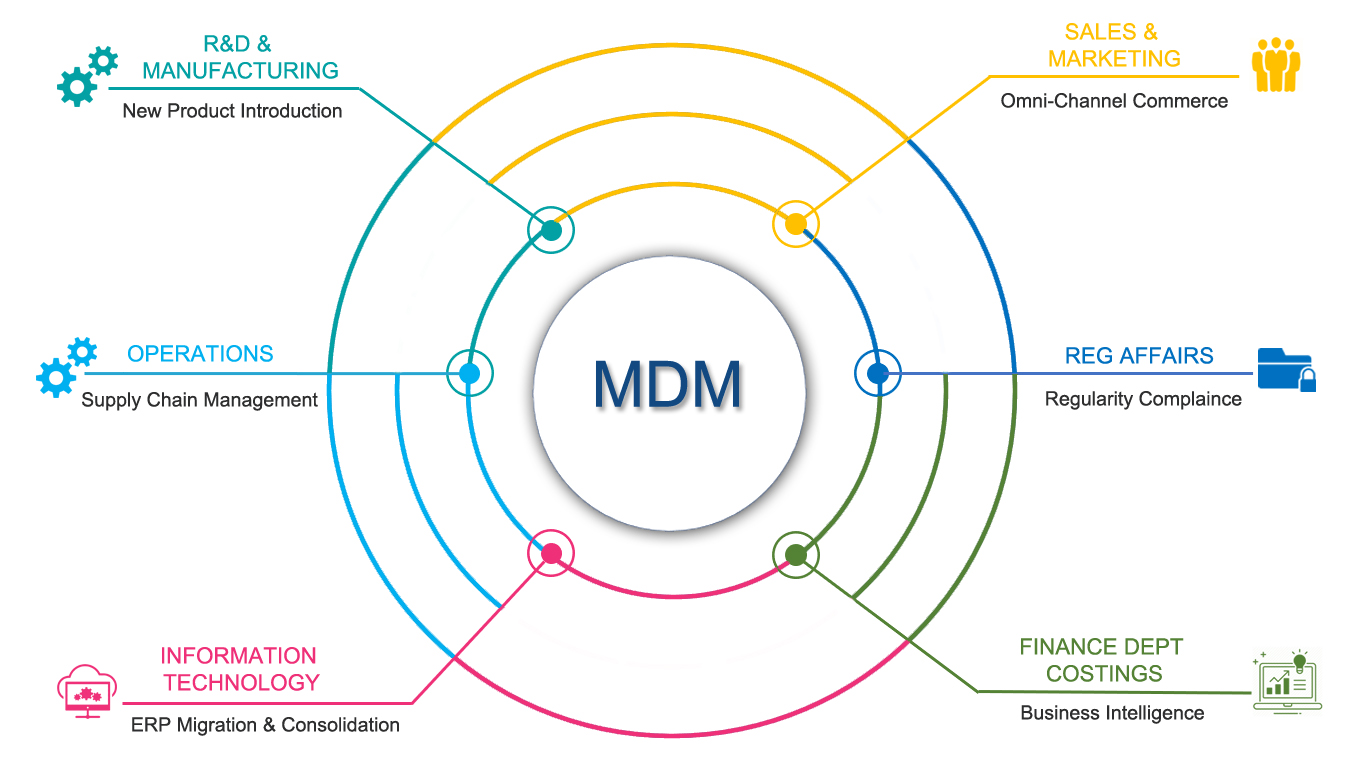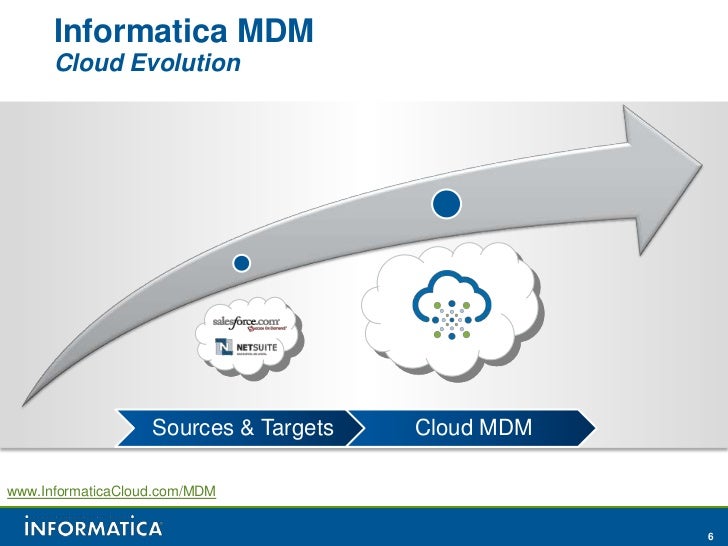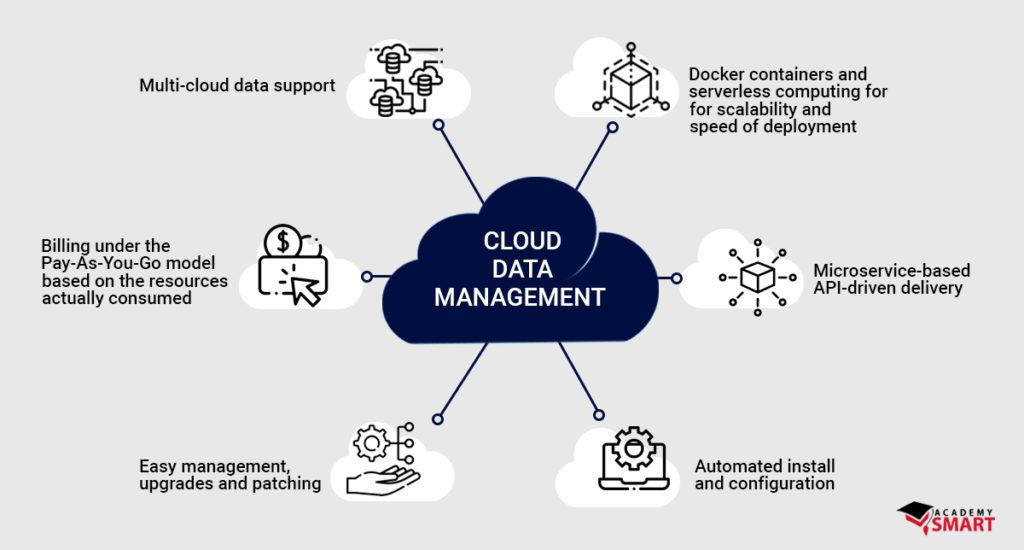Understanding Quality and Master Data Management (MDM) in the Cloud
Quality and master data management (MDM) in the cloud refer to the processes and tools used to ensure data accuracy, consistency, and security in cloud-based systems. MDM is crucial for organizations that rely on large volumes of data to make informed business decisions, maintain efficient operations, and deliver exceptional customer experiences. By implementing MDM solutions in the cloud, businesses can benefit from increased scalability, reduced costs, and improved collaboration compared to on-premises systems.

Key Factors to Consider When Evaluating Cloud-Based MDM Solutions
When selecting a cloud-based MDM solution, several key factors should be taken into account to ensure a successful implementation. These factors include:
- Data integration capabilities: A robust MDM solution should be able to seamlessly integrate with various data sources, both internal and external, to create a unified view of your organization’s data. Look for solutions that support multiple integration methods, such as APIs, web services, and data connectors.
- Scalability: As your business grows, so will your data management needs. Choose a cloud-based MDM solution that can scale with your organization, offering the flexibility to handle increasing data volumes and complexity without sacrificing performance.
- Security features: Data security is paramount in cloud-based systems. Ensure that the MDM solution you select offers robust security features, such as encryption, access controls, and audit trails, to protect sensitive information and maintain regulatory compliance.
- User-friendly interfaces: An intuitive user interface can significantly reduce the learning curve for your team, enabling faster adoption and minimizing the need for extensive training. Look for solutions that offer easy-to-use interfaces and visual tools for data management and analysis.
- Vendor reputation and customer support: Partner with a reputable vendor that offers reliable customer support. Research the vendor’s track record, customer reviews, and industry certifications to ensure they have a solid reputation for delivering high-quality products and services.

Top Cloud-Based MDM Solutions: A Comparative Analysis
When evaluating cloud-based Quality and Master Data Management (MDM) solutions, several leading products stand out for their unique features, strengths, and weaknesses. These include:
- Informatica MDM: Informatica offers a robust, scalable, and secure MDM solution that supports both cloud and on-premises deployments. Its data integration capabilities, powered by the Informatica Intelligent Cloud Services platform, enable seamless data synchronization across various sources. However, Informatica MDM may have a steeper learning curve compared to other solutions, requiring more extensive training for users.
- Profisee: Profisee is a user-friendly, multi-domain MDM solution that offers strong data matching and survivorship capabilities. Its intuitive interface and pre-built connectors make it easy to integrate with various data sources. However, it may not be as scalable as some of its competitors, potentially limiting its appeal for larger enterprises with extensive data management needs.
- Reltio: Reltio’s cloud-native MDM platform combines data management, analytics, and AI-powered recommendations in a single solution. Its real-time data processing capabilities and user-friendly interface make it an attractive choice for organizations seeking a modern, agile MDM solution. However, Reltio may have a higher total cost of ownership compared to other MDM solutions, which could be a barrier for some organizations.
- IBM InfoSphere MDM: IBM’s InfoSphere MDM solution offers advanced data governance and stewardship capabilities, making it suitable for organizations with complex data management requirements. Its flexible deployment options and extensive integration capabilities are appealing for large enterprises. However, its extensive feature set may be overwhelming for smaller organizations with less demanding data management needs.
When selecting a cloud-based MDM solution, it is essential to consider factors such as data integration capabilities, scalability, security features, and user-friendly interfaces. Additionally, evaluating vendor reputation and customer support is crucial to ensure a successful implementation and long-term partnership.

How to Implement a Successful Cloud-Based MDM Strategy
Implementing a cloud-based Quality and Master Data Management (MDM) strategy requires careful planning, execution, and continuous monitoring. Here are some practical steps to help you achieve a successful implementation:
- Establish Data Governance: Develop a clear data governance framework that outlines roles, responsibilities, and policies for managing data. This should include data ownership, stewardship, and security protocols. A solid data governance foundation ensures that all stakeholders understand their responsibilities and enables effective collaboration.
- Secure Stakeholder Buy-In: Engage key stakeholders early in the process and communicate the benefits of a cloud-based MDM strategy. This includes addressing any concerns or resistance and fostering a shared understanding of the project’s goals and objectives. By securing buy-in from all relevant parties, you can ensure a smoother implementation and increase the likelihood of long-term success.
- Manage Change: Implementing a new MDM system involves significant changes to existing processes and workflows. Develop a comprehensive change management plan that includes training, communication, and support for users. This will help minimize disruption and ensure a smooth transition to the new system.
- Monitor and Improve: Continuously monitor the performance of your cloud-based MDM system and make adjustments as needed. This includes tracking data quality metrics, addressing any issues or discrepancies, and optimizing processes for improved efficiency. By maintaining a focus on continuous improvement, you can ensure that your MDM strategy remains effective and relevant over time.
When implementing a cloud-based MDM strategy, it is essential to consider factors such as data governance, stakeholder buy-in, and change management. By following these best practices, you can increase the likelihood of a successful implementation and maximize the benefits of your cloud-based MDM solution.

Best Practices for Data Quality Management in the Cloud
Maintaining high data quality is crucial for the success of any cloud-based Quality and Master Data Management (MDM) system. By implementing best practices for data quality management, organizations can ensure accurate, consistent, and secure data. Here are some key strategies to consider:
- Data Profiling: Data profiling involves analyzing and understanding the data within your MDM system. This includes identifying data patterns, inconsistencies, and potential errors. By profiling your data, you can gain valuable insights into the quality of your data and identify areas that require improvement.
- Data Cleansing: Data cleansing involves correcting or removing inaccurate, incomplete, or duplicate data. This process is essential for maintaining high data quality and ensuring that your MDM system provides reliable and trustworthy data. Data cleansing tools and services can help automate this process and ensure that your data is consistently accurate and up-to-date.
- Data Validation: Data validation involves verifying that the data within your MDM system meets specific criteria or standards. This includes checking for required fields, validating data formats, and ensuring that data is consistent with established business rules. By implementing data validation processes, you can ensure that your data is accurate, complete, and reliable.
- Artificial Intelligence and Machine Learning: AI and ML technologies can help enhance data quality by automating data profiling, cleansing, and validation processes. By leveraging these technologies, organizations can improve the efficiency and accuracy of their data quality management efforts and ensure that their MDM system provides high-quality data.
By implementing these best practices for data quality management in the cloud, organizations can ensure that their MDM system provides accurate, consistent, and reliable data. This is essential for making informed business decisions, improving operational efficiency, and maintaining a competitive edge in the evolving data management landscape.

Navigating Data Security and Privacy Challenges in Cloud-Based MDM
Implementing Quality and Master Data Management (MDM) solutions in the cloud offers numerous benefits, including cost savings, scalability, and increased data accessibility. However, cloud-based MDM solutions also present unique security and privacy challenges that organizations must address to ensure the protection of sensitive data and compliance with data protection regulations. Here are some recommendations for navigating these challenges:
- Data Encryption: Encrypting data both at rest and in transit is essential for protecting sensitive information in cloud-based MDM systems. This ensures that data is only accessible to authorized users and prevents unauthorized access or data breaches.
- Access Controls: Implementing robust access controls is crucial for ensuring that only authorized users have access to sensitive data. This includes implementing role-based access controls (RBAC), multi-factor authentication (MFA), and other access control mechanisms to prevent unauthorized data access.
- Security Policies and Procedures: Developing and implementing comprehensive security policies and procedures is essential for ensuring the protection of sensitive data in cloud-based MDM systems. This includes establishing guidelines for data access, data sharing, and data disposal, as well as procedures for responding to data breaches or security incidents.
- Data Protection Regulations: Ensuring compliance with data protection regulations, such as the General Data Protection Regulation (GDPR) and the California Consumer Privacy Act (CCPA), is essential for avoiding legal penalties and protecting sensitive data. This includes implementing data protection measures, such as data minimization, data pseudonymization, and data retention policies, to ensure compliance with these regulations.
- Third-Party Vendor Management: Managing third-party vendors is essential for ensuring the protection of sensitive data in cloud-based MDM systems. This includes conducting due diligence on potential vendors, establishing data protection agreements, and regularly monitoring vendor compliance with data protection regulations.
By implementing these recommendations, organizations can navigate the security and privacy challenges associated with cloud-based MDM solutions and ensure the protection of sensitive data. This is essential for maintaining trust with customers, avoiding legal penalties, and maintaining a competitive edge in the evolving data management landscape.

Real-World Success Stories: Companies Thriving with Cloud-Based MDM
Implementing Quality and Master Data Management (MDM) solutions in the cloud has become increasingly popular among organizations seeking to improve data accuracy, consistency, and security. Many companies have successfully implemented cloud-based MDM solutions and experienced significant benefits. Here are some success stories of organizations that have effectively implemented cloud-based MDM solutions:
- Company A: A global manufacturing company implemented a cloud-based MDM solution to manage product data across multiple regions and systems. By implementing MDM in the cloud, the company was able to improve data accuracy, reduce data entry errors, and increase operational efficiency. As a result, the company experienced a significant reduction in costs and an increase in customer satisfaction.
- Company B: A healthcare provider implemented a cloud-based MDM solution to manage patient data across multiple hospitals and clinics. By implementing MDM in the cloud, the company was able to improve data consistency, reduce data duplication, and increase data security. As a result, the company experienced an improvement in patient care, a reduction in operational costs, and an increase in regulatory compliance.
- Company C: A retail company implemented a cloud-based MDM solution to manage customer data across multiple channels and systems. By implementing MDM in the cloud, the company was able to improve data accuracy, reduce data silos, and increase personalization. As a result, the company experienced an increase in customer engagement, a reduction in marketing costs, and an increase in revenue.
These success stories demonstrate the significant benefits that organizations can experience by implementing cloud-based MDM solutions. However, it is important to note that successful implementation requires careful planning, execution, and ongoing management. By following best practices for data governance, stakeholder buy-in, and change management, organizations can ensure a successful implementation and reap the benefits of improved data accuracy, consistency, and security in the cloud.

Future Trends and Innovations in Cloud-Based MDM
As organizations increasingly rely on Quality and Master Data Management (MDM) in the cloud, it is essential to stay informed about emerging trends and innovations in the field. By staying up-to-date with the latest developments, organizations can maintain a competitive edge in the evolving data management landscape.
- Blockchain technology: Blockchain technology has the potential to enhance data security and transparency in cloud-based MDM systems. By using a decentralized and distributed ledger, organizations can ensure the integrity and authenticity of their data, reducing the risk of data tampering and fraud.
- Real-time data analytics: Real-time data analytics can help organizations make more informed decisions by providing up-to-date insights into their data. By integrating real-time analytics with cloud-based MDM systems, organizations can improve data accuracy, consistency, and security, and gain a better understanding of their customers, products, and operations.
- Internet of Things (IoT): The Internet of Things (IoT) is generating vast amounts of data that can be used to improve business operations and customer experiences. By integrating IoT data with cloud-based MDM systems, organizations can gain a more comprehensive view of their data, improve data accuracy, and make more informed decisions.
To take advantage of these trends and innovations, organizations must be prepared to adapt to the changing data management landscape. This requires a commitment to continuous learning and improvement, as well as a willingness to invest in new technologies and solutions. By embracing these trends and innovations, organizations can improve their data management capabilities, reduce costs, and gain a competitive edge in their industry.
In conclusion, Quality and Master Data Management (MDM) in the cloud is a critical component of modern data management strategies. By implementing cloud-based MDM solutions, organizations can improve data accuracy, consistency, and security, and gain a better understanding of their customers, products, and operations. When evaluating cloud-based MDM solutions, it is essential to consider factors such as data integration capabilities, scalability, security features, and user-friendly interfaces. By following best practices for data governance, stakeholder buy-in, and change management, organizations can ensure a successful implementation and reap the benefits of improved data management in the cloud.
